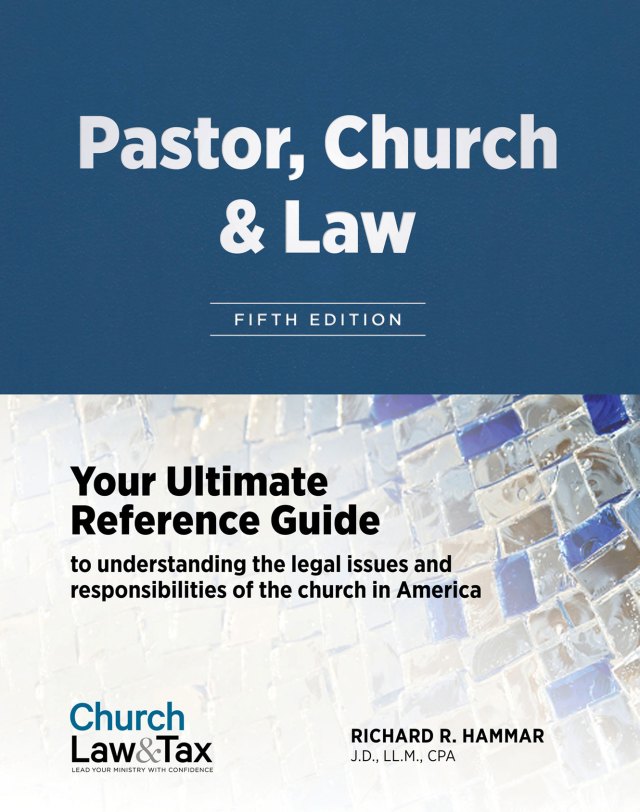• Key point 14-04. The display of religious symbols on public property does not violate the first amendment nonestablishment of religion clause so long as they are part of a larger display that includes secular symbols.
• Key point 13-01.1. The most commonly applied test for evaluating the validity of a law of government practice under the first amendment’s nonestablishment of religion clause is the three-part “Lemon” test. Under this test, a law or government practice that conveys some benefit on religion will be constitutional if it (1) has a clearly secular purpose; (2) has a primary effect that neither advances nor inhibits religion; and (3) does not foster an excessive entanglement between church and state. All three parts of the test must be met in order for the law or practice to be constitutional. The Supreme Court has recognized limited exceptions to this test.
Display of Religious Symbols on Public Property
* A federal appeals court ruled that a county seal bearing an outline of the Ten Commandments did not violate the nonestablishment of religion clause of the first amendment. Since 1852, a Georgia law has required clerks of the state superior courts to have a “substantial seal of office” bearing the name of the county and court. The county seal of Richmond County is circular, with the words “Superior Court Richmond County, GA” inscribed around the perimeter. The center of the seal contains a depiction of a sword and the Ten Commandments (depicted by two rectangular tablets with rounded tops, and Roman numerals I though V listed vertically on the left tablet, and numbers VI to X on the right side. The seal’s only function is to authenticate legal documents. Some 24,000 documents bore the seal in 1999. The county also displays a statue of Justice in the courthouse parking lot. The statue depicts Justice as a woman holding a sword in her right hand and the scales of justice in her left.
Three residents of the county filed suit in federal district court contending that the seal violates the nonestablishment of religion clause of the first amendment. The lawsuit claimed that the seal “prominently displays the Ten Commandments, a sacred text in the Judeo-Christian religious traditions,” in violation of the first amendment. A federal appeals court ruled that the seal did not violate the first amendment. It observed that a governmental practice does not violate the establishment clause if it satisfies a 3-part test: (1) a secular purpose, (2) a primary effect that does not advance or inhibit religion, and (3) no excessive government entanglement with religion. The county residents conceded that the seal did not foster an excessive entanglement between church and state, and therefore the only remaining issues were whether the depiction of the Ten Commandments on the seal had a secular purpose and a primary effect that did not advance or inhibit religion. The court concluded that the depiction of the Ten Commandments on the seal had a secular purpose: “In the context of authenticating legal documents, using a pictograph of the Ten Commandments intertwined with the sword helps viewers recognize the legal validity of documents …. During the 1870s the outline of the Ten Commandments presumably would have enabled illiterate citizens to recognize the legal validity of documents displaying the seal.”
The court also concluded that the primary purpose of depicting the Ten Commandments on the seal was not the advancement of religion. It stressed that six of the Ten Commandments “deal with honoring one’s parents, killing or murder, adultery, stealing, bearing false witness, and covetousness; all of which prescribe rules of conduct for dealing with other people. Much of our private and public law derives from these final six commandments …. For this reason, although primarily having a religious connotation, the Ten Commandments can, in certain contexts, have a secular significance.” The court noted that the seal is “solely limited to the very narrow context of authenticating legal documents” and therefore there was a “tight connection between a legitimate secular purpose for using the pictograph of the Ten Commandments and sword (using recognizable symbols of secular law, ones that suggest the force of law) and the context in which the seal is used (authentication of legal documents).” In addition, the clerk of the court “has not used the seal in contexts in which a reasonable observer might not understand the relationship between the seal’s symbols and its secular purpose.” Finally, the court noted that the seal did not contain the text of the Ten Commandments, and that the outline of the Ten Commandments was not the only symbol in the seal. It also has a depiction of a sword intertwined with the tablets. The presence of this additional symbol “increases the probability that observers will associate the seal with secular law rather than with religion.” King v. Richmond County, 331 F.3d 1271 (11th Cir. 2003).
© Copyright 2004 by Church Law & Tax Report. All rights reserved. This publication is designed to provide accurate and authoritative information in regard to the subject matter covered. It is provided with the understanding that the publisher is not engaged in rendering legal, accounting, or other professional service. If legal advice or other expert assistance is required, the services of a competent professional person should be sought. Church Law & Tax Report, PO Box 1098, Matthews, NC 28106. Reference Code: m47 c0204


